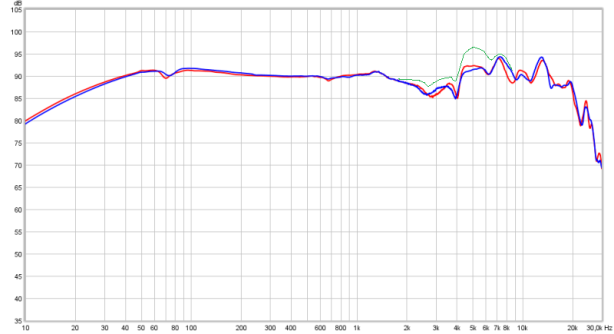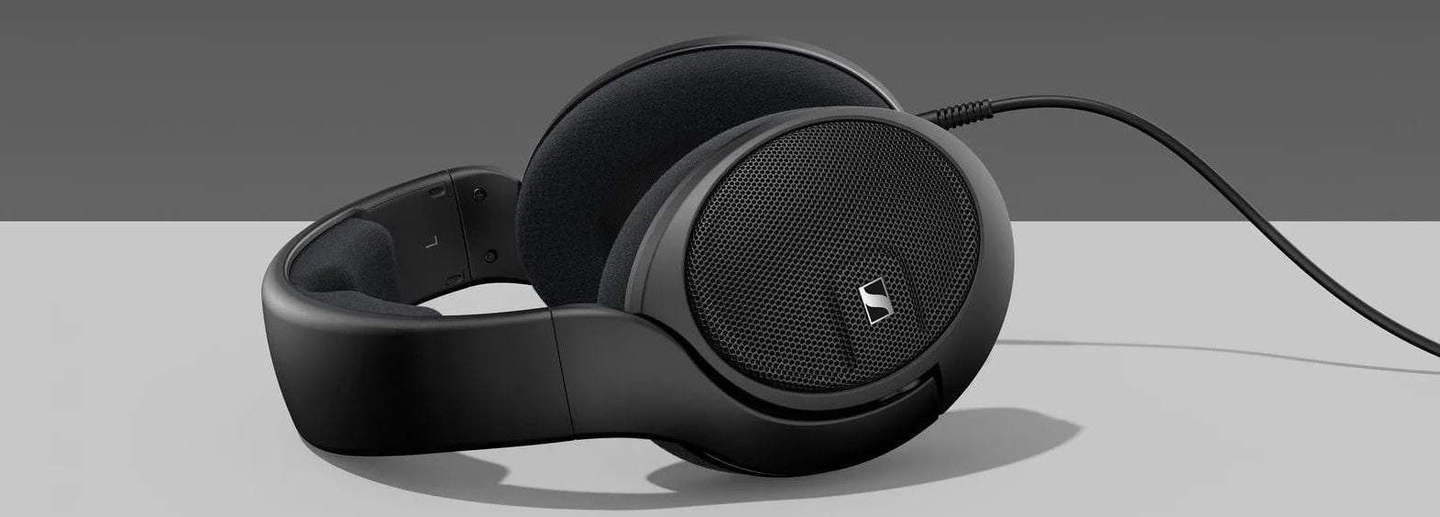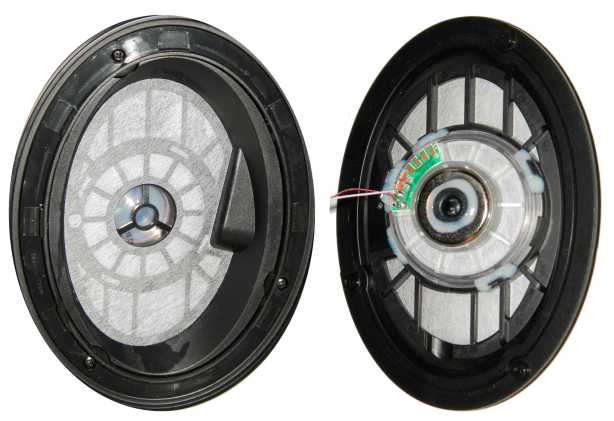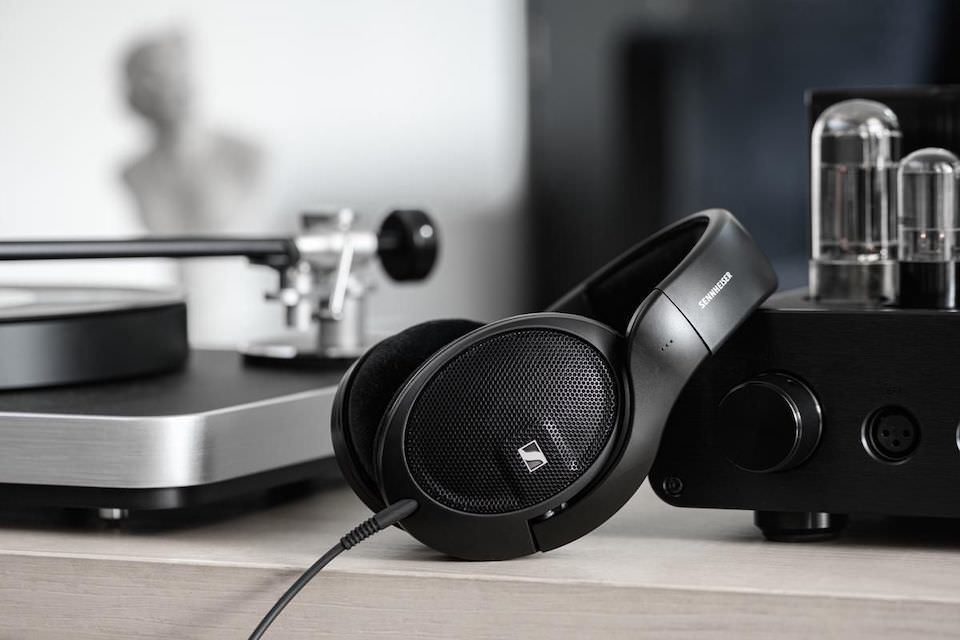This is a review in which we will focus on the new Sennheiser headphones, which, in my opinion, will become an inexpensive alternative to most flagships. Regular readers will remember that in this series I am trying to justify personal addictions to devices by logical reasoning and technical facts. Due to the subjectivity of the format, please refer to information without warning and not consider the post as an advertisement. Moreover, there is no device in our catalog yet. That is why I use the frequency response graph as the main image for the article, instead of the presentable and “tasty” photograph of the device from the advertising brochure.

Personal history and general information
For home listening, I prefer open headphones. Recently, my rare QUART PHONE 45x failed, which breathed on incense, because they were made at a time when Germany was divided into East and West. The most suitable replacement, in my opinion, could be the HD 560S, which were comparable in characteristics.
A copy of the novelty fell into the hands of an acquaintance who recently visited the place where they are already on sale. By the way, the acquaintance was not delighted, because, having evaluated the sound in the store, he was impressed and bought, and when he came home he found that the headphones were extremely poorly insulated (due to the open acoustic design). The purchase angered his wife even more.

Zenheiser's novelty belongs to a relatively budget segment, and, as I mentioned in the title, it costs EUR 170 (about $ 200) at home. I suppose that when it appears in Russia, it will cost about $ 20 - 30 more, as sometimes happens with models that have gained popularity in other countries. The letter S in the name stands for dynamic loudspeakers that belong to the new generation.

I think we should dwell on the origin of the individual elements of the device. The model was developed in Germany, the speakers for it are produced in Ireland, the headphones themselves are assembled in China. This approach, according to Sennheiser, helps to reduce the final cost of the device.

I would also like to point out right away that the new model has nothing to do with the very similarly named HD560 Ovation. Sennheiser has released so many headphone models that many of the alphanumeric combinations in the model names are repeated.
Outwardly, the new headphones differ little from their fellow HD 5xx series. The main differences are speaker and acoustic damping.
Ergonomics
Personally, I found it comfortable and deep. Many authors have already reviewed the device before me and completely agree with my conclusion. At the back of the ear cup, the ear depth is 28 mm, which is especially critical for people with large auricles. The headband fits snugly, soft ear cushions and trim compensate for the rather tight fit of the headband, so that long-term wearing did not cause discomfort for me during 2.5 hours of continuous listening.

After that, I had a desire to take off the headphones so that my head and the skin around my ears could get some rest. I cannot call myself very sensitive and demanding, but I had to wear headphones and be more comfortable. The ear cushions are velor, the ears were not hot in them, they are soft enough for me. The headband extends over a fairly wide range. It's hard for me to imagine a head that these headphones won't fit on. The weight of the device is 240 g, so the load on the neck is insignificant and is practically not felt. The cable is long enough, quite suitable for stationary use, the main connector is 6.3 mm, which also hints at stationary use, there is a 3.5 mm adapter in the kit.
Something about loudness and impedance
High sensitivity of the headphones 108 dB / 1V makes it possible to use them with portable equipment without an additional amplifier. Meanwhile, both the manufacturer itself and many reviewers recommend using with a headphone amplifier, since the relatively high impedance requires a large output voltage. The audio card of my laptop Lenovo Ideapad 330 S perfectly "rocked" the headphones and provided sufficient volume for listening with a margin, and, accordingly, the amplifier is able to create at the output voltage sufficient for 120-ohm speakers. Therefore, it is not necessary to purchase the tube headphone amplifier shown in the manufacturer's brochures.

Some technical data
Datasheet provides the following information about the device:
- Type: open.
- Application: home, studio, portable.
- :
- : , .
- : Sennheiser, 2,5 TRRS.
- : , .
- : 3 TRS 6,3 .
- : 38 (36 ), 9 °
- . : 0,2
- . : 5 Vrms (14Vpp)
- . : 42
- .SPL: 121
- : 120
- : 99 / 1 (108 / 1 ), 110 /
- : 240 . ( )
- : TRS 15 6,3 3,5 , .
The HD560S has monitor playback features. Fidelity is achieved thanks to frequency neutrality, without characteristic accents, and also due to low harmonic distortion. No zero and unnecessary rumble even ghh listening to heavy genres such as mathcore and progmetal.
The peculiarity of sound is the creation of a fairly realistic, three-dimensional sound picture, with relatively accurately located phantom sources. A characteristic feature of most Sennheiser full-size headphones is the naturalness of sound transmission, its realism.
Listening to Dies Irae from the Requiem in D minor, performed by the London Symphony, revealed subtle but present intermodulation distortion. It is impossible to call the sound blurry, but the female chorus is transmitted by headphones without the ability to concentrate on a specific voice or a group of voices due to the blurred sound image. I had no complaints about other works, in particular, classical ones. Hands did not reach an objective measurement of IMD, and, judging by the lack of these in the network, not only me.
Measurements
The measurements made by diyaudioheaven generally confirm my subjective conclusions. I myself, due to curvature and lack of time, do not take measurements.
Uneven frequency response

Red - right, blue - left, green perception.
When compared with well-known models, then the comparison with the Beyerdynamic DT880 is indicative, the red line is HD 560S

Nonlinear distortion
Since 40 Hz harmonic distortion of less than 1%. Above 100 Hz, where distortion significantly affects fidelity, the ratio is impressively low. The 2nd harmonic above 100 Hz is possibly below 0.2%, it is difficult for the author of measurements to determine due to the error of the equipment. 3rd order harmonics (more audible) stay below 0.1%> 100 Hz.


Resonance
A noticeable but short resonance can be found around 4 kHz. In general, the waterfall cannot fail to impress; the resonances were clearly worked on.

Output
HD560S - affordable headphones from the HD5xx series, which are distinguished primarily by high fidelity and neutrality of reproduction (i.e., relatively flat frequency response and low nonlinear distortion). The main disadvantage is the controversial ergonomics and open acoustic design, which, meanwhile, is less prone to the formation of standing waves inside the cups.